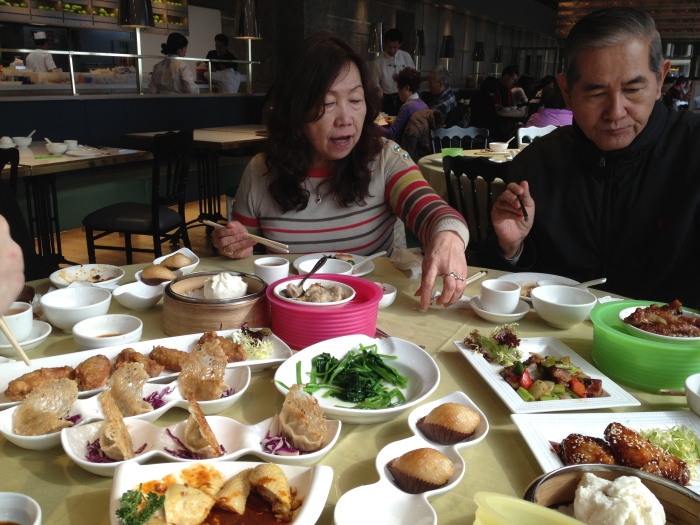Food in Hong Kong where money rules
In this place where money rules, food is big business.
For a long time, Westerner’s experience of Chinese food has really been Hong Kong food or some interpretation of it: dim sums, lemon chicken, sweet and sour pork, congees, wontons, roast meats. The allure of cantonese cuisine and delicacies has charmed diners all over, long before the term “foodie” was even invented.
Today, beyond offering the best in local cuisine, Hong Kong is becoming an international food capital, where a widest array of cuisine from all over the world is available, and of the highest quality.
Hong Kong locals and residents congregate where good food is, and restaurants congregate where the crowds go. There are pockets of places all over Hong Kong island and Kowloon that have become famous food streets. For example, Parkes Street in Jordan is lined with shops after shops of different local eateries and different types of Chinese food – claypot, hotpot, beef noodles, Cantonese-style desserts. Over on Hong Kong Island, the Soho area (South of Hollywood Road), which is mainly Elgin Street, Staunton Street and the other streets in-between, anything from Italian, French, Spanish, Greek, Japanese, Thai, Indonesian, or exotic Chinese cuisine (Sichuan, Northern China) can be found here.
Food is not only Hong Kong’s lifeblood, or a lifestyle. In Hong Kong food is also competitive and a constantly evolving industry. Restaurants have to compete in offering high quality items to an increasingly discerning population of diners, especially among the diverse food options that continue to spoil food lovers. It is necessary to be creative and reinvent to stay interesting.
A major threat to the survival of restaurants in Hong Kong is the high operating costs, especially the exorbitant real estate prices and rentals here – one of the most expensive cities of the world. As reported in an article by CBS New York in November 2012, Hong Kong overtook New York with the highest ever retail rental, of US$2,630 a square foot per year in Causeway Bay. It is challenging to stay afloat with such high costs, especially during times of weak or uncertain economic conditions.
However, while some retails shops go out of business, a restaurant business still offers promise. Many restaurants in Hong Kong are actually run by a number of big restaurant groups and chain stores, such as Maxim’s, Dining Concepts, Aqua or PressRoom. These companies have deep pockets and are more resilient over smaller set-ups.
Some other restaurants adapt in different ways to stay profitable. Many restaurants now operate away from expensive street-level properties, instead choosing a space few levels up in a building. It is becoming common for restaurants to occupy spaces in commercial buildings instead of offices. Others move into shopping malls. Michelin-star wonton noodle shop, Ho Hung Kee, moved out of its street-level shopfront in Causeway Bay to avoid paying HK$350,000 (US$44,872) of monthly rent, and re-opening in Hysan Place. Its operator and founding family sold the shop in 2011 and cashed-in HK$100million. While food courts used to be a foreign concept, smaller food operators may now also choose this as a starting ground. Yet others move into less expensive areas, opening up new food districts in the process.
With its strong food tradition and lifestyle, Hong Kong continues to be an important market for international food and beverage products. The more it offers, the more exciting Hong Kong becomes as a destination for tourism and diversity. The city’s food scene will stay abuzz for the foreseeable future. Food lovers in Hong Kong would have more to whet their appetites.




